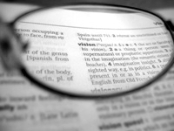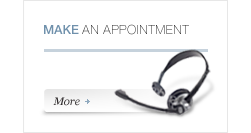Presbyopia


Presbyopia (weakening reading vision)
What is it?
“Accommodation” is the process whereby the flexible natural lens in your eye changes shape to enable you to focus on near objects and read.
Presbyopia is a common condition occurring in the 40s to 50s where the lens in your eye hardens and loses its ability to change shape as a result of ageing – ie. your eye loses its ability to accommodate. It means that you can no longer focus on near objects without the help of reading glasses.
This causes a decrease in the ability to see clearly at near, when the eyes are adjusted for distance. Thus, if you naturally have clear distance vision, then you will begin to need “magnifying glasses” for clear close-up vision when you approach 40 – 50 years of age.
If your vision at distance is clear with glasses or contact lenses, you will not see clearly at near with your contacts or glasses on unless they are bifocals, or unless purposefully under- or over-adjusted so that in effect you become short-sighted (myopic). You will generally need to wear bifocal glasses for near vision, although some myopic people can remove their distance glasses and see well at near.
What can be done?
For people approaching or in this age group, we must decide how to best adjust your eyes given this ageing change. People who have already begun to use bifocals, reading glasses, or who need to remove their distance glasses for clear near vision usually understand this, though people who have not yet crossed this threshold sometimes find this confusing.
Three options are possible for dealing with Presbyopia:
1. Both eyes can be fully adjusted for distance.
This is often the best option for those under 40, whose accommodation is still working well.
In this way, the distance vision will be as good as technically possible, and you can also focus on things up close, and still read without glasses. Your vision will be the same as someone who has never worn glasses.
Beginning sometime between the ages of 40 – 50, you will need to use reading glasses for good close vision. This could be referred to as the “normal” situation, because the use of reading glasses typically becomes necessary during ages 40–50, even for those with perfectly normal eyes who have not had laser vision correction.
As your eyes age, and your reading vision deteriorates, you may also have the option of a re-treatment to achieve Monovision or Mini-monovision as outlined below.
2. Monovision
This can be a good option for those in their 50s or 60s whose accommodation is poor.
Monovision involves adjusting one eye for distance vision and one eye for near vision. Monovision is commonly used in contact lenses and can also be used with laser vision correction or other vision correction techniques (such as cataract surgery or lens exchange).
In monovision, one eye will be used primarily at a time for ideal focus. If the object is far away, the “distance” eye will be primarily used. If the object is near, the “close-up” eye will be primarily used. Both eyes are used all the time, but one is generally primary, depending on the distance of the viewed object. Peripheral vision and depth perception are usually only minimally affected. Monovision is achieved by purposefully leaving one eye somewhat shortsighted (-1.5 to -2 dioptres). Usually, this is the non-dominant eye.
The main advantage of monovision is that patients over 40 – 50 years old often will not use glasses for distance or near vision. The main disadvantage is that the patient is relying on one eye at a time, and some people do not like this. Monovision can be trialed with contact lenses prior to your surgery.
People with monovision may still use glasses in situations where they require excellent vision out of both eyes. For some, but not all, patients this may include driving a car (especially at night) or doing extensive reading. Other monovision patients may rarely use glasses.
If a patient elects to have monovision and for some reason does not like it, the “near” eye can usually be adjusted to a “distance” eye with a touch-up procedure to eliminate the remaining shortsightedness. Once people have monovision and get adjusted to it (which may require a few weeks), it is extremely rare for patients to elect to have it eliminated.
3. Mini-Monovision (also known as Blended Vision)
This is a good option for those between the ages of 40 and 50 whose accommodation is still partially working.
Mini-Monovision is a compromise between the two options above. In Mini-Monovision, your non-dominant eye is treated so that only a small amount of shortsightedness (between -0.5 dioptres and -1.5 dioptres) remains. This will cause only a small decrease in distance vision in one eye, but will aid somewhat in close-up and mid-range vision. For many patients 40-50 or older, this “mild” monovision is a reasonable way of dealing with the age-related loss of adjustable focussing.
The degree of Mini-Monovision is adjustable, based on age and visual demands. The patient can have good distance vision as well as good midrange (intermediate) vision without glasses. Midrange vision is very useful, such as viewing a computer or looking at faces during conversations.
As your eyes age, and your reading vision deteriorates further, you may also have the option of a re-treatment to achieve full Monovision as outlined above.
Monovision or Mini-Monovision should only be a consideration for people who are at least 40 years old. The best way to determine which option is best for you is to carefully test the different the options using temporary glasses or contact lenses. We will perform this testing for you during the Pre-Lasik Examination, allowing you to see the various options and helping you to pick which option is best for you and your lifestyle.

